Copyright 2020 - 2021 irantour.tours all right reserved
Designed by Behsazanhost
The Realm of Yazdan
The Realm of Yazdan
The World's Largest Adobe City
By: Gilgamesh
Dating back to 5,000 years ago, the North and West sides of the central desert in Iran is home to one of the earliest settlements of humans in the country, a valuable civilization that introduces one of the most astonishing adobe architectures of the world. This piece is written to celebrate the registration of Yazd city as a UNESCO World Heritage and flaunt its many merits. Yazd, the Heaven of Adobe and Divine Motifs.
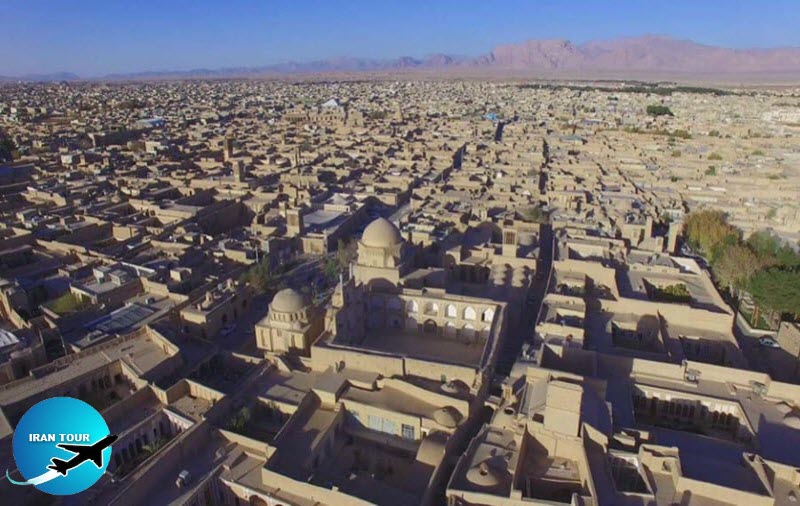 |
Yazd is located in the central part of Iran's Plateau neighboring Isfahan, Shiraz, South Khorasan, and Kerman. Its name is taken from the term that means God (Yazdan) and is a land known for its sanctity. Some attribute its creation to Ardeshir the Unifier (the Founder of the Sassanid Empire), some to Yazdgerd, some to Bahram V (the 15th Sassanid King), and some to Alexander the Great Tranquillity and piety are what the inhabitants of this realm are known for. Their emphasis on beliefs and spirituality manifests itself in forms of religions such as Islam, Zoroastrianism, and Judaism. The amicable nature of Yazd residents enables the followers of these religions to live peacefully together, the same reason that saved them from disaster in times of hardship and war. Having relatively fertile land and being on the path of caravans made Yazd a perfect location for a city; however, the scarcity of water was a constant concern. As the main source of life, accessing and reserving water has always been an issue. Humans, up until the rise of modernity, depended on the primitive utilization of nature in order to meet vital needs. Given many challenges, Yazd residents managed to use natural resources wisely without causing any damage. Qanat or Kariz is the solution for desert dwellers in dealing with the water challenge. The underground water channels moved the water from the foothills to the plains to be used for different purposes.
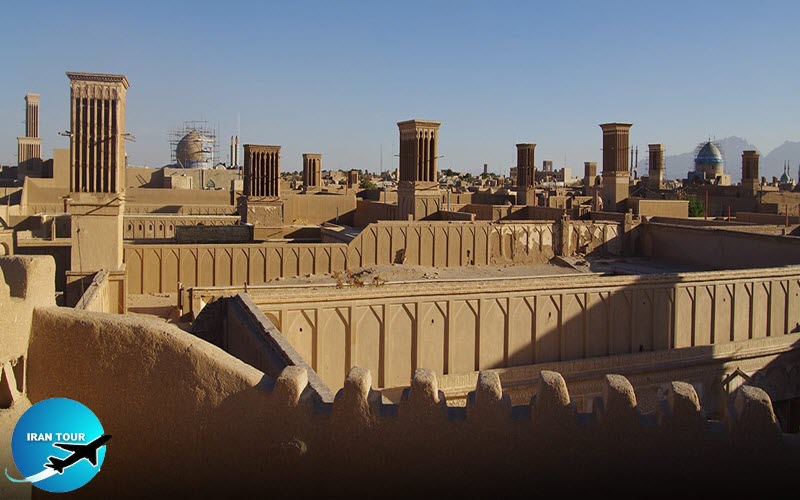 |
For many years, the 700 qanats of Yazd successfully brought water to the city and supplied the needs of the residents. After passing through the city, the water would reach the farmlands, and this cycle would continue. The qanat design is a sign of the intellect and wisdom of people over the capacity of their surrounding environment. Another sign of this wisdom is using the most abundant element of nature in the area, soil, for different purposes such as shelter and safety. From this soil, the brick was made and from brick, the houses and strong fortifications rose. The solid fortification dates back to the 13th century, and has been restored, expanded, and strengthened numerous times to secure the city.
The culture of latency is evident in the behavior, textile, and even architecture and urban development of Yazd. Long, narrow streets that were gated and used by a couple of related families, Hashti (octagonal reception section), Dalan (roofed passageway), and the Andarouni and Birouni (private and public sections) are the main parts of a house The creation of such sections are people's attempt to make hierarchy or priority for the spaces and narrow down the number of people that could reach the most private sections of the house.
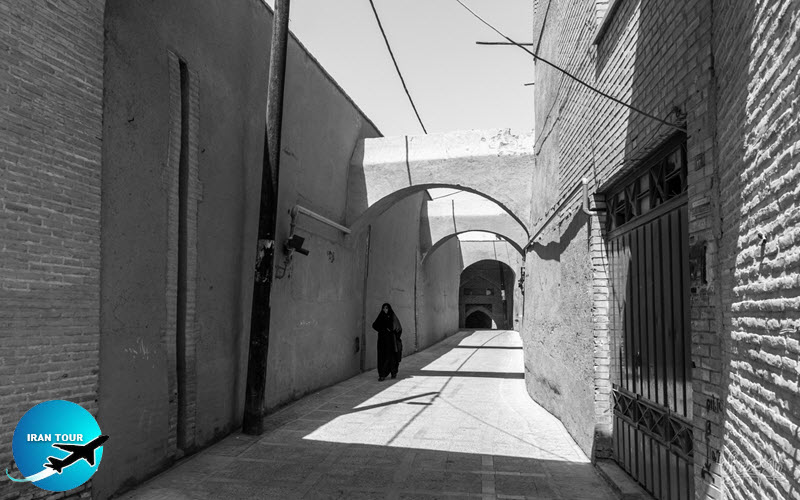 |
Tailoring the conditions of their living environment enabled creative desert dwellers to begin a new age of innovation by creating wind catchers, Sabat, and the central courtyard. The bricked wind catchers of these introverted houses cooled down the place using the wind and passing it through the halls and basements. The roofed streets that were named Sabat or Tagh provided the passers-by with a much-needed shelter from the hot summer sun. The central courtyard was built at a lower level to provide more shadows and be a reminder that forests are just a dream in this area.
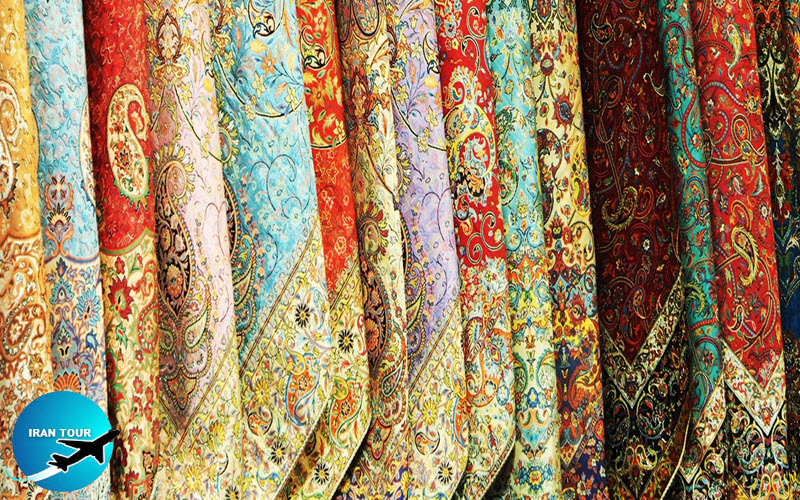 |
The restrictions on the natural conditions of the place forced upon people do not end with influence on the architecture, it also has impacted the lifestyle and social affairs. Lack of water and its effect on agriculture brought forth the necessity of other means or sources of income like trades and domestic products. In most houses and workshops in Yazd, clay is used for pottery, weaving-related products are made, and different forms of textile-like Termeh, Zari, Darale, and Ahrami are woven in addition to Qali (Carpet) and Zilo. The landscape of this city with domes, minarets, and wind catchers is a witness of the ingenious architecture that has its roots in the climatic features of the area and is considered as a treasure of tangible and intangible heritages.
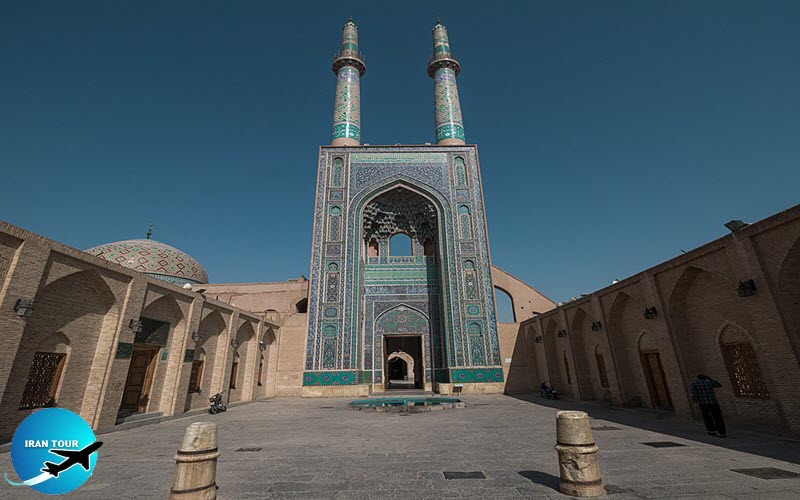 |
Yazd on the Path to Recognition
The rich culture and tradition of Yazd have brought this city to the center of attention many times. In 1985 when Yazd's Organization of Cultural Heritage and Handicraft was initiated, this attention gained more official momentum. Moreover, several cultural figures took matters into their own hands to initiate, direct and supervise efforts in the process, and with the involvement of the Art and Architecture University of Yazd, as well as efforts on the parts of the Water Museum, and the Cultural Heritage Organization. Yazd became reinvigorated as the historically important city it once was. With the union of Tourism Organization and Cultural Heritage Organization, emphasis on the tourism aspects of Cultural Heritages was intensified. The idea of traditional residential spaces became rapidly popular, and many historic constructs of Yazd were turned into residential spaces that helped visitors get to know the culture and lifestyle of people more closely.
In 2001. to save the historic weave of the city and its values, the Cultural Heritage Centre of Yazd city was established. The organization is a research-oriented center focusing on architecture, restoration, history, and archaeology and has published numerous invaluable articles in this regard. The highlight of the center was the registration of the city with more than 700 hectares of land as a National Heritage in 2005. The establishment of such organizations created the opportunity for formulating legal regulations to protect the city, and draw more attention to Yazd and its preservation. In 2010, the documents needed to register Yazd in the tentative list of UNESCO were gathered, but the process of its registration came to a temporary halt. Five years later, with the re-establishment of the Yazd Cultural Heritage Centre, and the help of the International Registration Office, the process was re-instated. This time the focus was on the role of the residents of Yazd, interaction with urban managers, and taking advantage of the domestic and foreign experiences. The Cultural Heritage experts began advertising the importance of the historic texture of the city and educating the residents. The center's main office was moved to the Yazd City Hall so that the council members can take a more active part in this matter. Meanwhile, a request for assistance was sent to CRAterre France which has experts with the experience of registering many cities in UNESCO, they played an invaluable role in helping Yazd get registered on the Heritage List as the largest and yet inhabited adobe city in the world.
|
-Yazd and Worldwide Fame
Each year, the cultural and natural places that possess at least one of the ten criteria defined by UNESCO are presented to this organization to be registered as part of their World Heritage list. In the Convention Concerning the Protection of the World's Cultural and Natural Heritage, two positive aspects of registration are mentioned. First, the sites that are registered belong to all nations regardless of race, religion, or nationality. Second, the protection of these sites is mandatory no matter where the heritage is located.
Yazd is one of the biggest adobe cities in the world with outstanding sites such as the Jameh Mosque. Zoroastrian Fire Temple, Amir Chakhmaq Complex, Qanats, Wind catchers, and traditional houses; all with distinctive architecture are presented to visitors. The landscape of this city with domes, minarets, and wind catchers is a witness to the ingenious architecture that has its roots in the climatic features of the area and is considered a treasure of tangible and intangible heritages.
Not only has more than 700 hectares of the historic section of Yazd kept its form but the coexistence of different religions is another important feature of the city as well. Even though traditions, social customs, and religious rituals are an indivisible part of people's lives, increasing the number of domestic productions with all the limitations is still their goal. Although these goals have been criticized many times, they are the reasons why the city was registered (due to meeting criteria iii and v) during the 41st meeting of The UNESCO World Heritage Committee in Krakow, Poland as Iran's 22nd Cultural Heritage site, in July 2017.
- Details
- Category: Yazd Tourism
